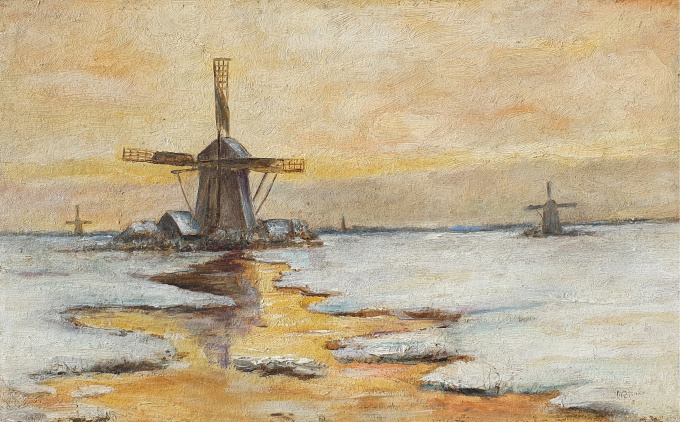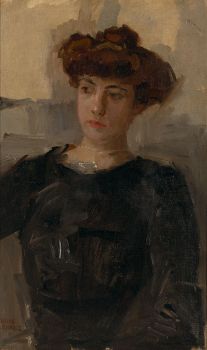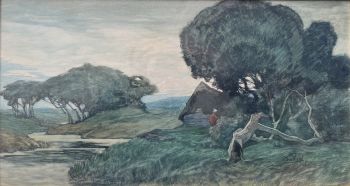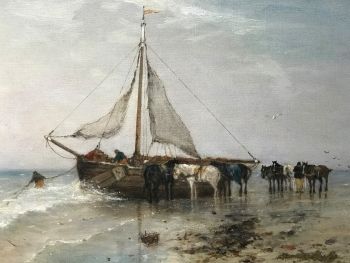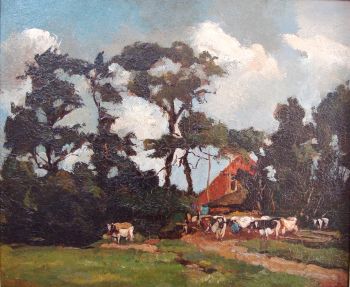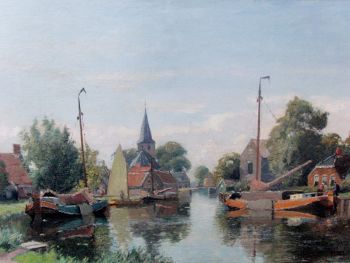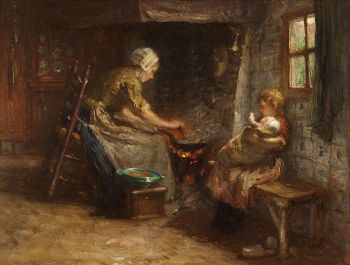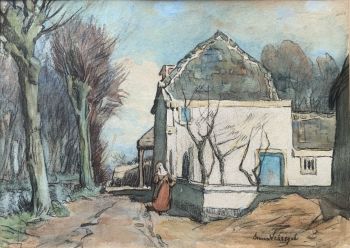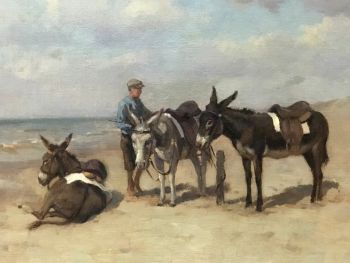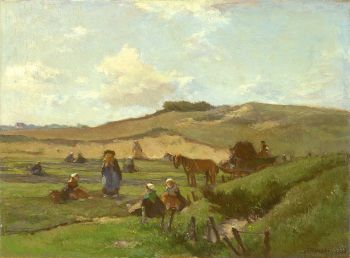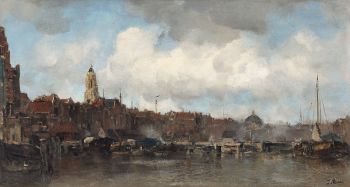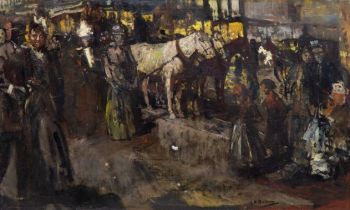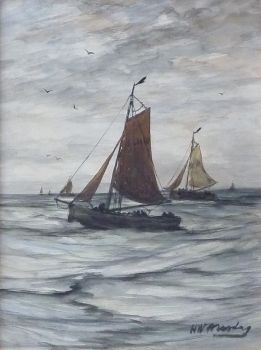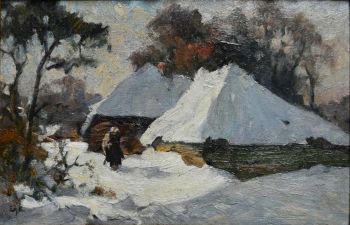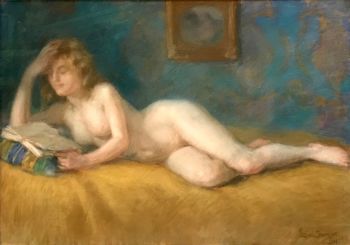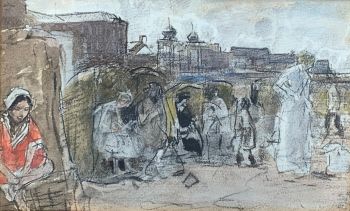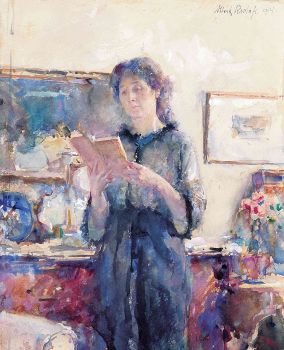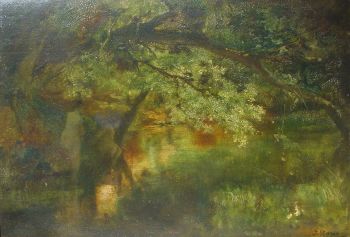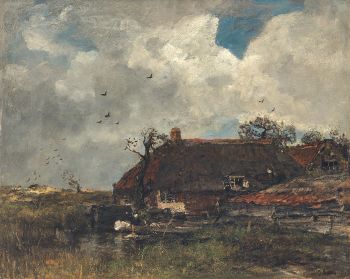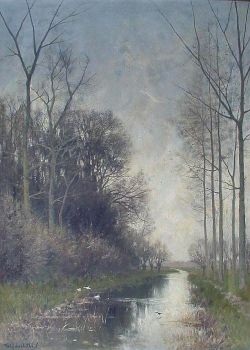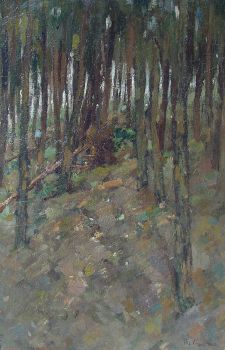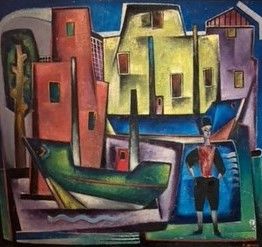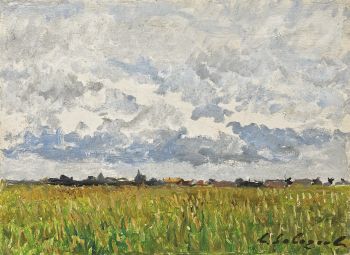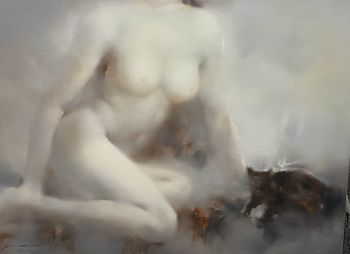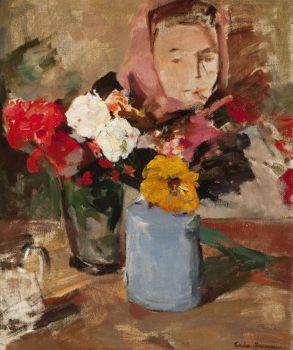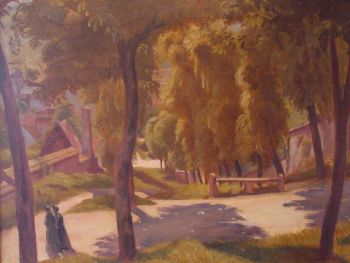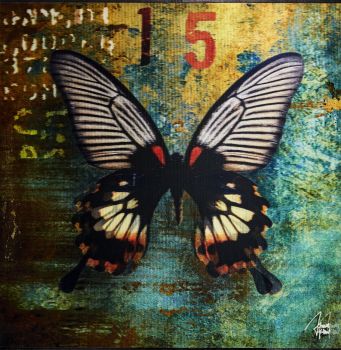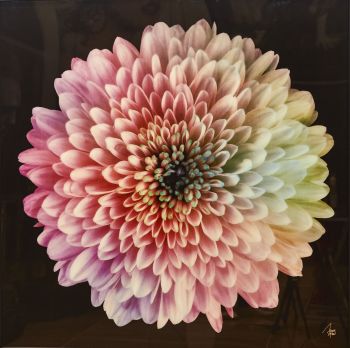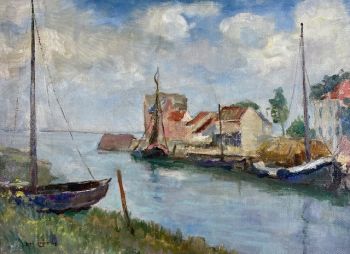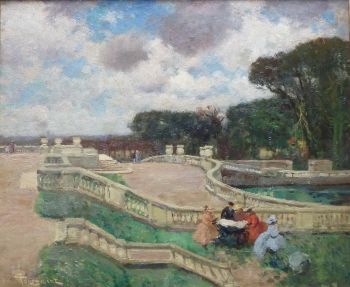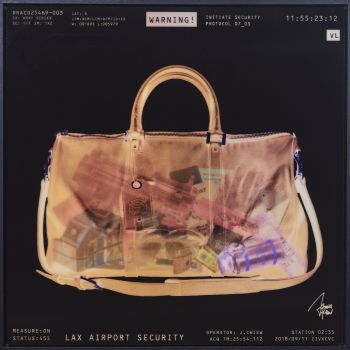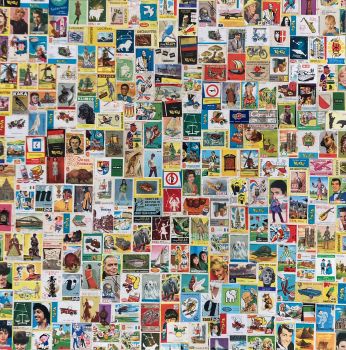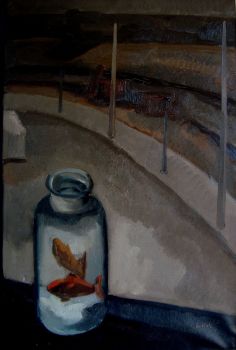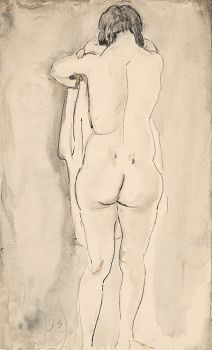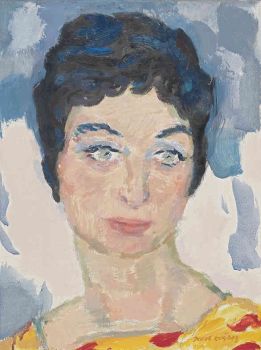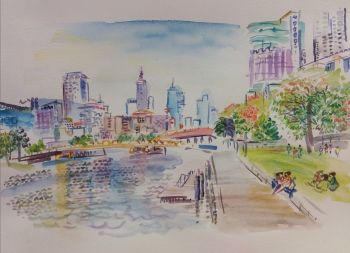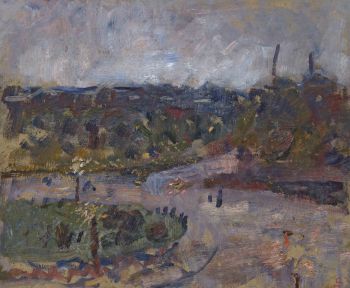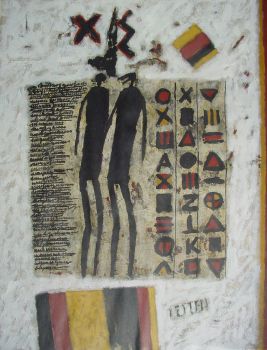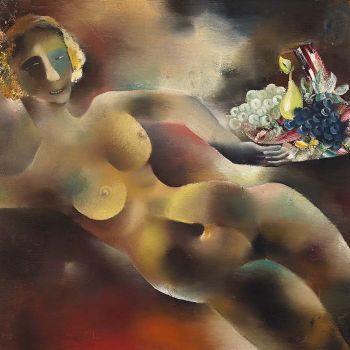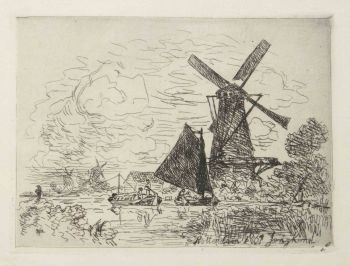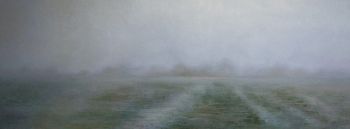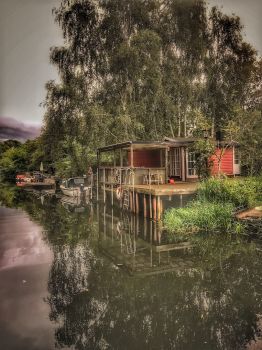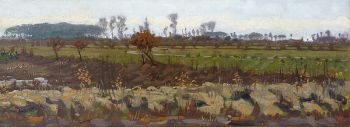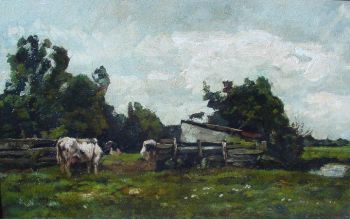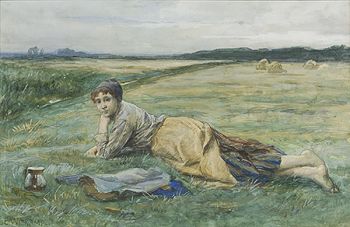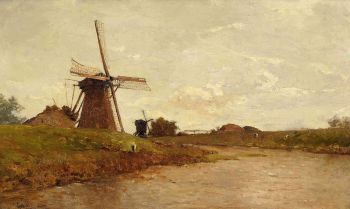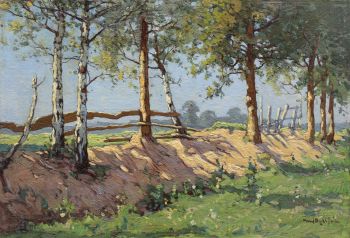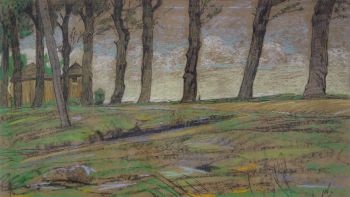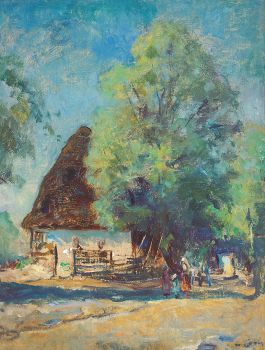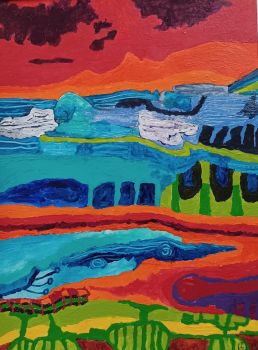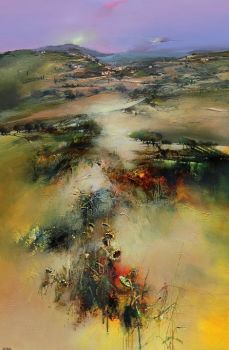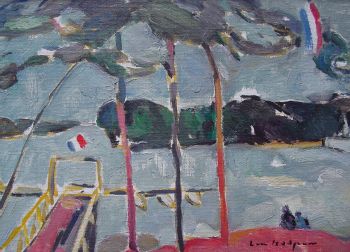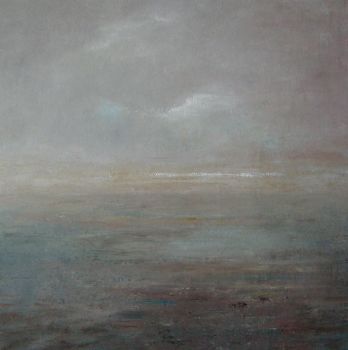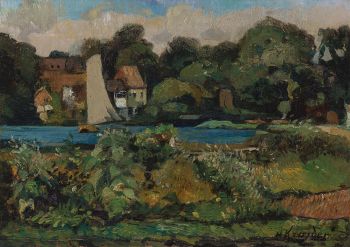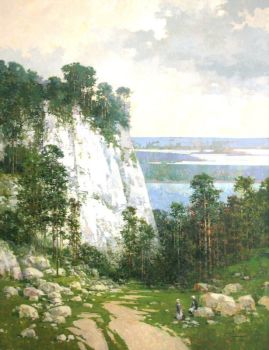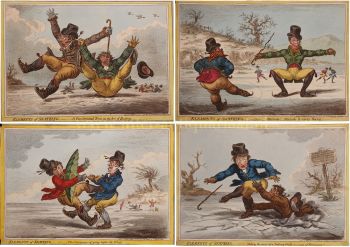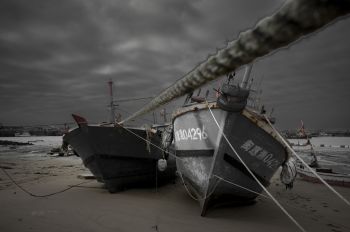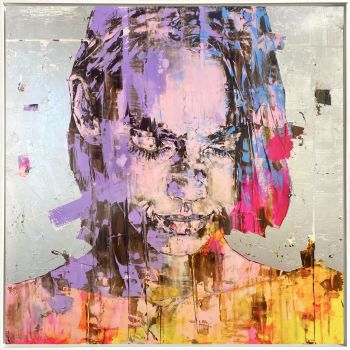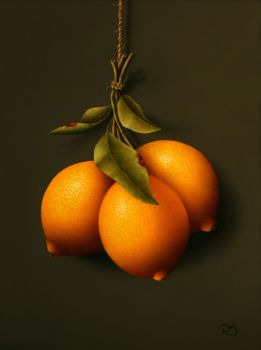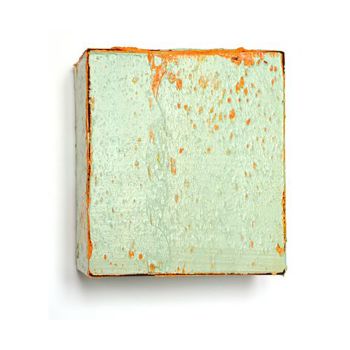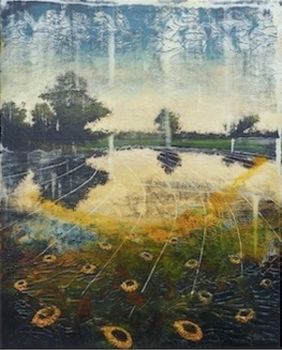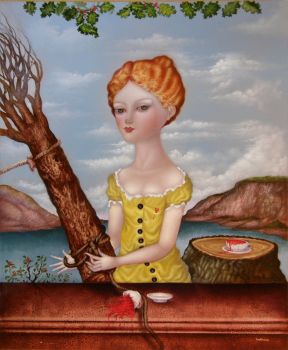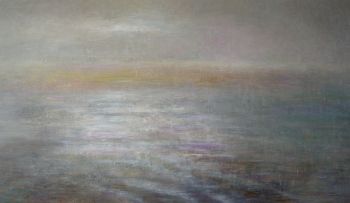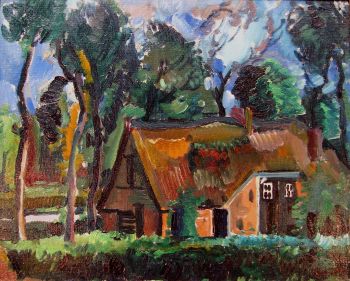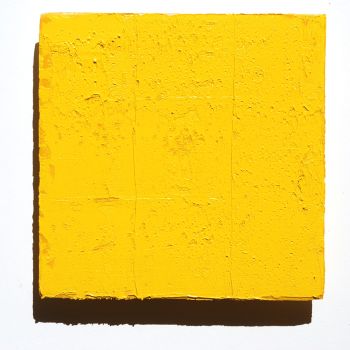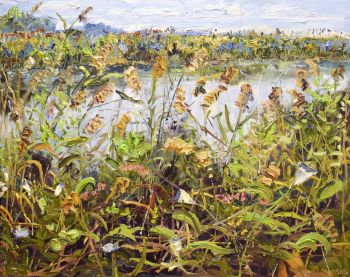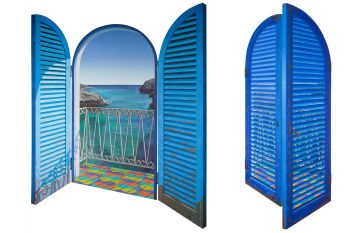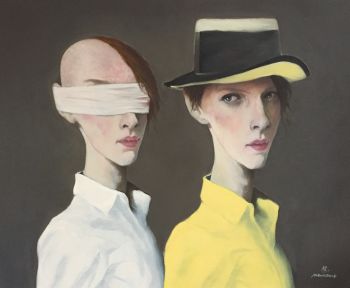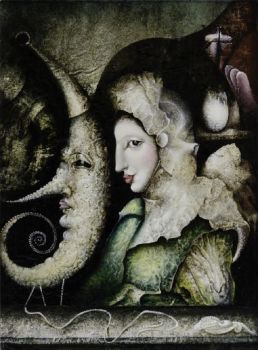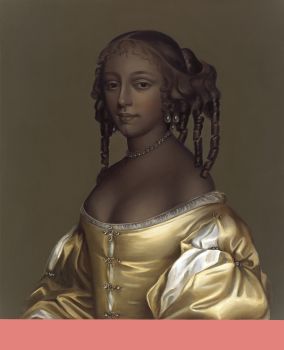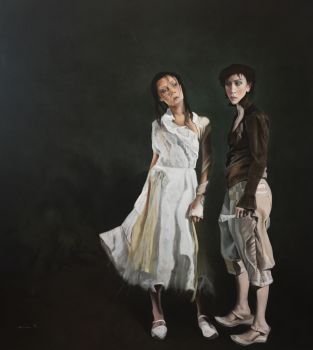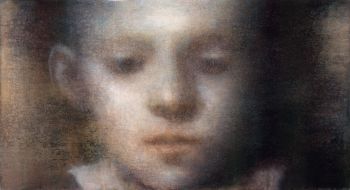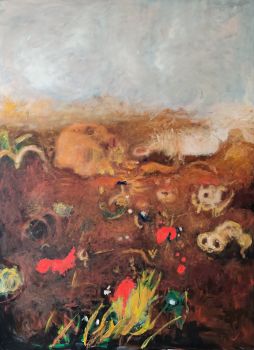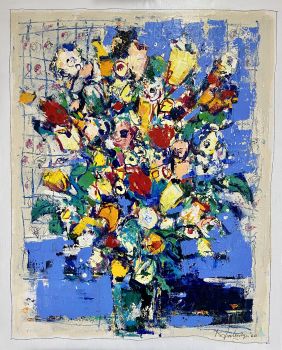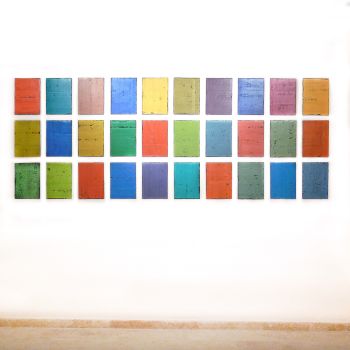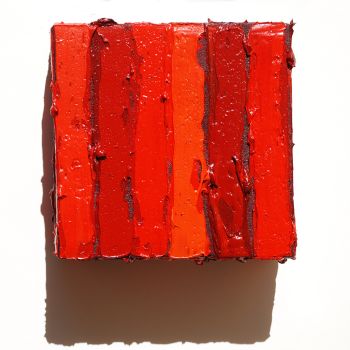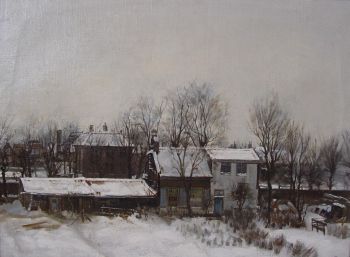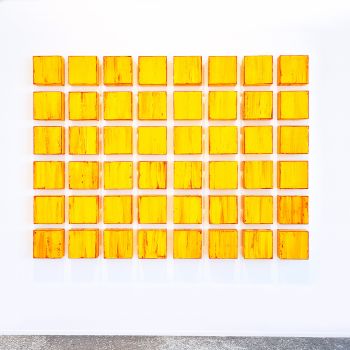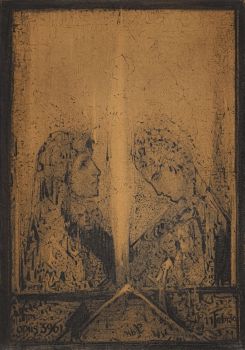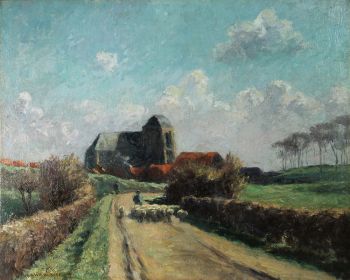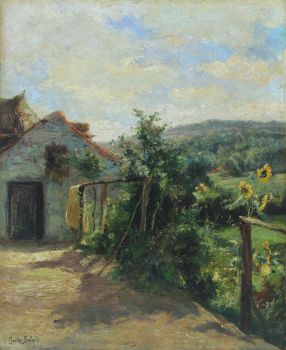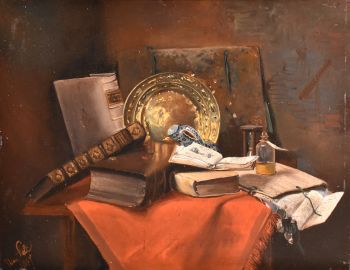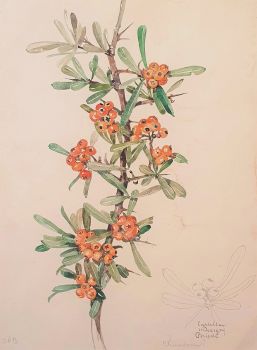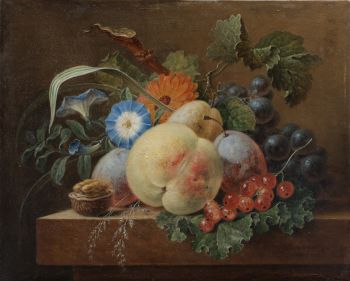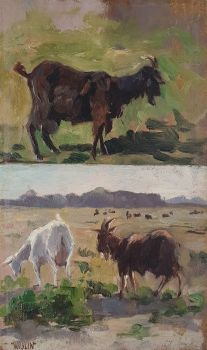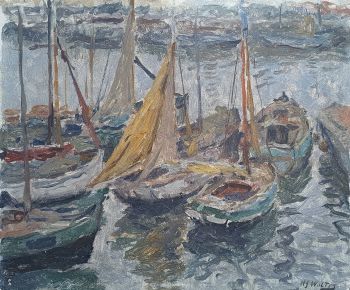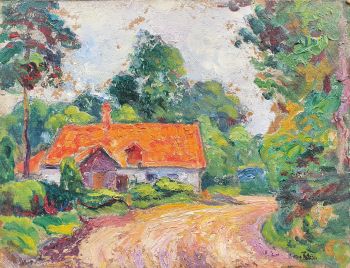Winter in Holland 1900 - 1910
Philippe Zilcken
MadeiraTábuaPintura a óleoPintar
18.50 ⨯ 31 cm
ConditionExcellent
€ 2.750
Klooster Fine Art
- Sobre arte[EN]
Philip Zilcken used an unusual palette to create the atmosphere for this winter view of the Dutch countryside. Winter in Holland may be the same painting that Zilcken showed in 1909 on the 79th international exhibition in the Museum of Modern Art in Rome, Italy. In the review of the exhibition in De Nieuwe Courant, on 10 April 1909, the reviewer remarked that out of all Dutch contributors, Zilcken was the only artist that proved of international cachet. The writer stated that ‘An old gate in Algiers’ and ‘Winter in Holland’ were painted in eccentric and atmospheric tones that draw much attention. By doing so, the reviewer wrote that Zilcken was the only Dutch artist standing out from the masses.
This landscape of the countryside show just those atmospheric tints the reviewer praised in Zilcken’s Winter in Holland. By having the warmly coloured sky reflected in the water stretching towards the closest windmill, Zilcken created a stark contrast with the snow on the fields. Two more windmills can be seen in the background. All three windmills have their sails in the short rest position. When millers weren’t expecting rain for a short while, the sails would be left in this position, resembling a big ‘+’ sign.
Especially in the sky, Zilcken used his typical, vivid brushstrokes, almost giving a sense of movement. This painting on board is signed ‘Ph Zilcken’ on the lower right.
[NL]
Philip Zilcken gebruikte voor dit Nederlands winterlandschap een ongebruikelijk palet om de juiste sfeer weer te geven. Mogelijk is Winter in Holland hetzelfde schilderij dat Zilcken toonde op de 70ste internationale tentoonstelling voor moderne kunst in Rome in 1909. In de tentoonstellingsrecensie in De Nieuwe Courant, op 10 april 1909, merkte de recensent op dat van alle Nederlandse inzendingen, Zilcken de enige met internationale allure was. De auteur stelde dat ‘Een oude poort in Algiers’ en ‘Winter in Holland’ in eccentrische en atmosferische tonen waren geschilderd, en zo veel aandacht trokken. Daardoor zou Zilcken als enige Nederlander zijn opgevallen in de massa.
Dit polderlandschap laat precies het soort atmosferische tonen zien die de recensent in Zilcken’s Winter in Holland prees. Door de warm gekleurde lucht in het water te laten reflecteren, legde Zilcken extra nadruk op het contrast met de sneeuw op de weilanden. Alle drie de windmolens hebben hun wieken in de korte ruststand staan. Wanneer molenaars een tijdje geen werk verwachtten, werden de wieken in deze stand gezet.
Met name in de lucht gebruikte Zilcken zijn kenmerkende, dynamische penseelstreken, die bijna beweging lijken te suggereren. Het schilderij werd op board gemaakt, en rechtsonder gesigneerd: ‘Ph Zilcken’. - Sobre artistaCharles Louis Philippe Zilcken foi um artista e escritor holandês. Ele nasceu em Haia em 1857, local onde se matriculou pela primeira vez nas aulas de desenho durante seus estudos no Gymnasium Haganum. Ele entrou para a história devido à sua posição como co-fundador da Sociedade de Gravura Holandesa e como editor do Illustrated Journal mensal da Elsevier, o predecessor do Elsevier Journal, de 1896 a 1905. Em 1928, ele escreveu pessoalmente suas memórias sob o título traduzido como 'Memórias de um pintor holandês do século XIX'; principalmente uma lembrança de suas viagens e interesse em países do norte da África, como o Egito. Seu foco no oriental pode ser rastreado em suas pinturas a óleo, pastéis e gravuras ao examinar seu uso de projeto arquitetônico e o indivíduo só é conhecido por desempenhar um papel de tipo subordinado. Um grande número de trabalhos desenhados no local e impressos em tinta marrom-avermelhada sobreviveu ao teste do tempo; estes são frequentemente caracterizados por um design esboçado. Zilcken faleceu no ano de 1930. Atualmente, sua obra pode ser admirada em museus como o Amsterdam Rijksmuseum.
Você está interessado em comprar esta obra de arte?
Artwork details
Related artworks
Isaac Israels
"Een essayeuse bij het modehuis Hirsch"1865 - 1934
Preço em pedidoStudio 2000 Art Gallery
 Com curadoria de
Com curadoria deDanny Bree
Bernardus Johannes Blommers
Het bereiden van de maaltijd1870 - 1914
Preço em pedidoStudio 2000 Art Gallery
Johannes Evert Akkeringa
'Nettenboetsters' in the Dunes1861 - 1942
Preço em pedidoStudio 2000 Art Gallery
Fredericus Jacobus van Rossum du Chattel
Poldervaart in the Vecht river region1899 - 1901
Preço em pedidoKunsthandel Pygmalion
Aris Knikker
Riverview with a village (Kortenhoef, Netherlands)1887 - 1962
Preço em pedidoKunsthandel Pygmalion
1 - 4 / 24- 1 - 4 / 24
Aris Knikker
Riverview with a village (Kortenhoef, Netherlands)1887 - 1962
Preço em pedidoKunsthandel Pygmalion
1 - 4 / 24Bernardus Johannes Blommers
Het bereiden van de maaltijd1870 - 1914
Preço em pedidoStudio 2000 Art Gallery
1 - 4 / 24- 1 - 4 / 12

